February 1, 2013
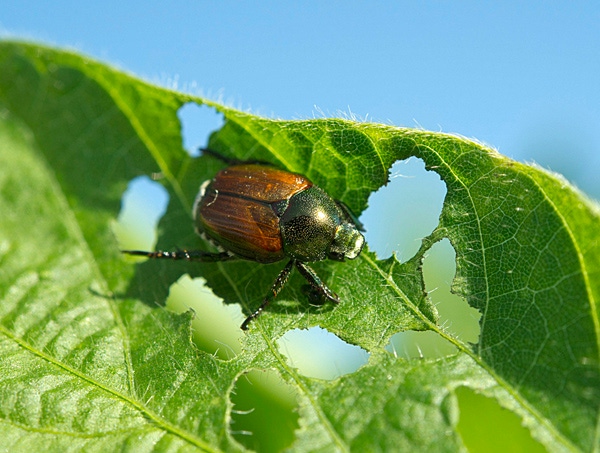
In the Midwest, insect pressure varies widely depending on location, weather and cropping practices. But year-in and year-out, some pests tend to dominate more than others. According to Extension entomologists in Indiana, Illinois, Iowa and Nebraska, corn rootworm is by far the region’s worst insect pest for corn. Soybean’s top insect pest is less clear, but the four most often mentioned in the Midwest are soybean aphids, bean leaf beetles, Japanese beetles and spider mites.
Knowing which insects will likely take the biggest bite out of crop production prior to planting can be helpful for planning yield-loss-prevention strategies. On the other hand, it’s still way too early to predict how much, if any, yield loss insects might cause for a particular field in 2013, says Christian Krupke, Purdue University Extension entomologist. A lot depends on Mother Nature, particularly during spring, he says.
“Spring weather conditions typically have a greater impact on insect pest pressure than winter conditions,” says Krupke. “If spring is unusually cool and wet, that’s generally bad for crops, but good for insects. The longer seed remains in contact with cool, wet soils before and during germination, the more difficult it is to prevent yield loss from insect pests. If spring is unusually cool, but not wet, that’s the next worst scenario.”
Since weather conditions are rarely the same across any given region, insect survival and/or migration patterns also vary widely between different growing areas, notes Krupke. Still, he and other Midwestern entomologists report regularly seeing yield-reduction problems from the following five corn insect pests nearly every year:
Corn Rootworm
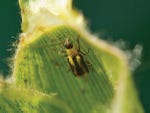 “There is considerable variation across the Corn Belt with respect to the top 5 insects in corn and soybeans,” says Mike Gray, University of Illinois Extension entomologist. “However, in corn, western corn rootworms are undoubtedly the key pest, particularly with Bt resistance having recently been confirmed in Iowa and Illinois.”
“There is considerable variation across the Corn Belt with respect to the top 5 insects in corn and soybeans,” says Mike Gray, University of Illinois Extension entomologist. “However, in corn, western corn rootworms are undoubtedly the key pest, particularly with Bt resistance having recently been confirmed in Iowa and Illinois.”
Due to its ability to develop resistance to certain Bt corn hybrids, western corn rootworms are the key pest to guard against in corn fields for 2013, agrees Erin Hodgson, University of Iowa Extension entomologist. “Corn rootworm resistance to Bt is probably the ‘hottest’ topic in field crop pest management right now,” she states.
Corn rootworms are also the key concern in Nebraska, says Bob Wright, University of Nebraska Extension entomologist. He notes that western corn rootworm populations, (both adults and larvae) have been increasing in recent years due to milder-than-normal winters and more continuous corn production.
On the other hand, corn rootworm numbers have been trending very low for the last three or four years in Indiana, reports Krupke. “Corn rootworms tend to be vulnerable to heavy spring rains in May that kill a lot of the hatching larvae, and we’ve had several consecutive wet springs,” he says. “Also, corn rootworms are definitely more of a problem in continuous corn production. But in Indiana most growers have remained in a 50-50 corn/soybean rotation.”
Continuous corn can make a big difference in allowing insect pest pressure to build up, adds Krupke. “Crop rotation can be like hitting the reset button for lowering corn rootworm populations,” he says.
Ear-feeding caterpillars
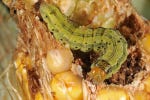 Caterpillars that feed on corn ears are typically the second most likely cause for yield reductions in any given year, according to Wright, Gray and Krupke. One reason for potential yield loss is that “insecticidal control is difficult for these insects because of timing,” says Wright. “However, some Bt corn hybrids are available with activity against these insects.”
Caterpillars that feed on corn ears are typically the second most likely cause for yield reductions in any given year, according to Wright, Gray and Krupke. One reason for potential yield loss is that “insecticidal control is difficult for these insects because of timing,” says Wright. “However, some Bt corn hybrids are available with activity against these insects.”
Western bean cutworms overwinter in the soil and can be worse after a mild winter, says Krupke. However, corn earworms are largely a migratory insect that are brought in by spring winds from the Gulf States. “So, earworm populations are heavily dependent on spring wind patterns,” he adds.
 Japanese beetles
Japanese beetles
“These insects are a regular threat in soybeans but are increasingly a concern in corn where they can interfere with pollination by clipping silks,” says University of Illinois’ Gray.
Spider Mites
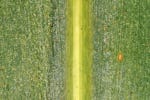 Some insects do better in a dry year, so spider mites were a common problem throughout drought-stricken areas in the Midwest during 2012, particularly in Nebraska and Iowa. “Spider mites do exceptionally well in drought and were a big problem in corn and soybeans last summer,” says Hodgson. “I expect them to be problematic this year if we continue to have a dry winter and spring.”
Some insects do better in a dry year, so spider mites were a common problem throughout drought-stricken areas in the Midwest during 2012, particularly in Nebraska and Iowa. “Spider mites do exceptionally well in drought and were a big problem in corn and soybeans last summer,” says Hodgson. “I expect them to be problematic this year if we continue to have a dry winter and spring.”
In addition to the two-spotted spider mite, the Banks grass mite was also a problem to corn in Nebraska last year, says Wright. Corn leaf aphids and bird-cherry oat aphids are other potential corn insect pests during a dry year in Nebraska, he adds.
Seed-feeding insects
 Black cutworms and seed-feeding soil insects like wire worms, seed corn maggots and white grubs tend to be a problem in corn during a cool, wet spring, says Krupke. “The longer it takes for seeds to germinate, the more risk there is for yield loss from soil insects.”
Black cutworms and seed-feeding soil insects like wire worms, seed corn maggots and white grubs tend to be a problem in corn during a cool, wet spring, says Krupke. “The longer it takes for seeds to germinate, the more risk there is for yield loss from soil insects.”
Soybean pest rankings differ
Midwestern entomologists disagree over the rankings for soybean’s top five insect pests, which include the following:
Soybean aphids
 “Although often very sporadic, soybean aphids are most likely to be of economic importance in the northern Midwest year-in and year-out,” says Gray. “Soybean aphids are primarily a problem for Illinois in very mild growing seasons. Hot and dry summers work against their establishment.”
“Although often very sporadic, soybean aphids are most likely to be of economic importance in the northern Midwest year-in and year-out,” says Gray. “Soybean aphids are primarily a problem for Illinois in very mild growing seasons. Hot and dry summers work against their establishment.”
In Nebraska, soybean aphid populations failed to reach economically critical levels in most parts of the state last year, says Wright, “because of the high temperatures, which suppress aphid growth and reproduction.”
A harsh winter with many freeze-thaw cycles will also decrease soybean aphid populations by reducing egg survival, says Krupke. “We haven’t had any widespread pressure from soybean aphids in Indiana since 2005,” he says.
Japanese beetles
This leaf-chomping insect is rapidly increasing in numbers in Illinois and Iowa. “I would place Japanese beetle at least number two for soybeans,” says Gray.
However, certain weather conditions have the potential to reduce Japanese beetle populations. “The Japanese beetle overwinters as a larva in the soil, so mild conditions may help their survival rate,” says Krupke. “They also tend to emerge sooner after a warmer-than-usual spring.”
Bean leaf beetles
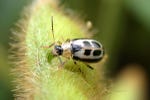 A warm fall and a mild winter will favor increased bean leaf beetle populations, says Krupke. “During the last couple years, bean leaf beetles have definitely been worse than normal late in the year,” he says. “We’ve seen more pod feeding from bean leaf beetles in the last two years than in any of the previous 10 years. That may be partially an indirect result of less spraying for soybean aphids.”
A warm fall and a mild winter will favor increased bean leaf beetle populations, says Krupke. “During the last couple years, bean leaf beetles have definitely been worse than normal late in the year,” he says. “We’ve seen more pod feeding from bean leaf beetles in the last two years than in any of the previous 10 years. That may be partially an indirect result of less spraying for soybean aphids.”
In Nebraska, bean leaf beetles are typically only a periodic problem, says Wright. “Early season populations can be suppressed by using a neonicotinoid seed treatment,” he adds.
Spider mites
Indiana soybeans suffered from large spider mite populations last year because of the drought, says Krupke. Spider mites were also widespread in Illinois, Iowa and Nebraska, for the same reason.
Stink bugs and Dectes stem borer
 These two soybean pests have recently become a common problem in Nebraska, reports Wright. The Dectes stem borer is more common in south-central Nebraska. “There are few control options available for them,” he says. “So, we recommend early harvest if they’re abundant.”
These two soybean pests have recently become a common problem in Nebraska, reports Wright. The Dectes stem borer is more common in south-central Nebraska. “There are few control options available for them,” he says. “So, we recommend early harvest if they’re abundant.”
Stink bugs are now becoming a potential late-season soybean pest problem due to feeding on seeds within pods, Wright adds.
About the Author(s)
You May Also Like




